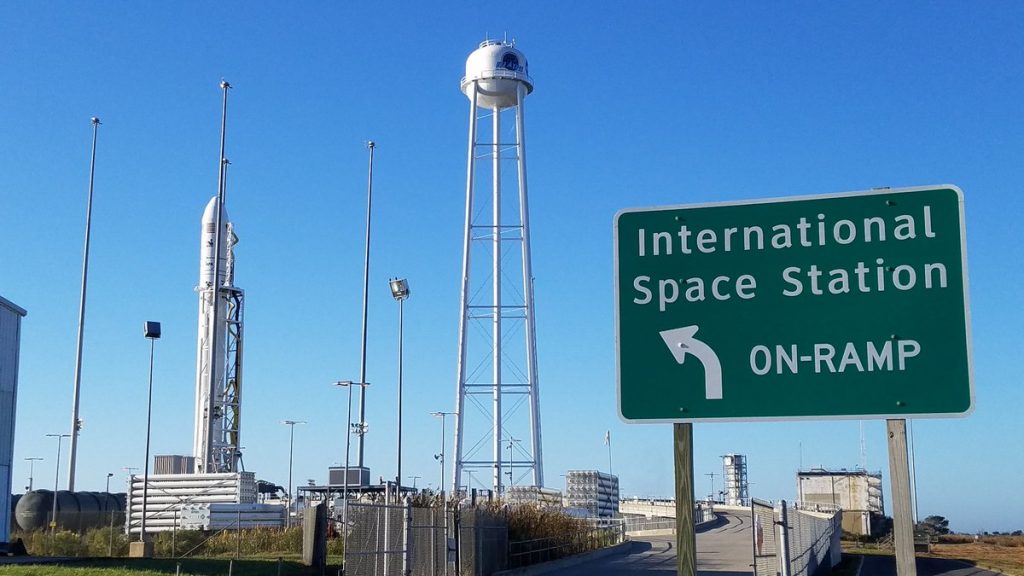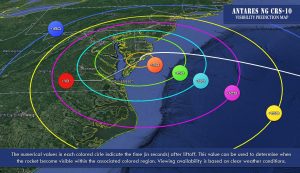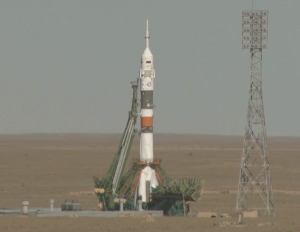
If the weather cooperates, another stunning nighttime launch of the Antares rocket will occur at NASA’s Wallops Flight Facility on the Virginia coast; the lift-off should be visible across a large part of the Mid Atlantic in the dark pre-dawn skies. Previously known as Orbital ATK’s rocket, Northrop Grumman which acquired the company in June, plans to launch its Antares from NASA Wallops on the early morning of Thursday, November 15 no earlier than 4:49am, when the launch window opens.
The large rocket launch will be visible in the dark sky for hundreds of square miles as long as Mother Nature cooperates. The Antares rocket will carry the cargo craft Cygnus to space. Cygnus will deliver vital equipment, supplies and scientific experiments to astronauts aboard the International Space Station (ISS). This mission is known as NG-10.
Designed to provide responsive and low-cost access to space, Antares is a two-stage vehicle that provides low-Earth orbit (LEO) launch capability for payloads weighing up to 8,000 kg. Internally funded by Orbital ATK, Antares completed a risk reduction mission and a demonstration of commercial re-supply services for the ISS under a NASA Commercial Orbital Transportation Services (COTS) agreement in 2013. Orbital ATK commenced delivery of cargo to the ISS under the NASA Commercial Resupply Services (CRS) contract in 2014. The company will conduct three additional missions in 2018 and 2019 to fulfill the CRS1 agreement with NASA to deliver supplies to the space station. Northrop Grumman will also conduct the first mission under the CRS2 contract in 2019, which on its own is for 6 missions to the ISS.

The last launch of the Antares rocket at NASA Wallops occurred last spring on May 20; that mission, the OA-9, brought 6,200kg of supplies to the ISS. Prior to OA-9, an Antares rocket lifted off from Wallops on November 12, 2017; that mission successfully brought 7,400 pounds of supplies and science to the ISS.
Cargo is delivered to the station using Cygnus spacecraft. The Cygnus spacecraft consists of two modules: the Service Module (SM) which incorporates the avionics, propulsion and power systems from Orbital ATK’s LEOStar and GEOStar spacecraft buses; and the Pressurized Cargo Module (PCM) which carries the crew supplies, spares and scientific experiments. The SM is integrated and tested at Northrop Grumman’s Dulles, Virginia satellite manufacturing facility. The PCM is supplied by Thales Alenia Space and is produced in Turin Italy.

The ISS has had some drama recently with an aborted launch of astronauts to it just weeks ago. On October 11, the Soyuz rocket malfunctioned after lift-off. However, the one Russian and one American on-board safely returned to Earth after an abort procedure was successfully initiated. The Soyuz, the only way to get people to/from the ISS, was grounded until the reason for the malfunction was understood and rectified. Less than two weeks ago, the Russian Space program released a report explaining what went wrong.
While the launch will be visible around a heavily populated portion of the Mid Atlantic should the weather cooperate, people can also see the launch in-person. The NASA Visitor Center at Wallops will open at 1am on launch day for public viewing. Additional locations for catching the launch are Robert Reed Park on Chincoteague Island or Beach Road spanning the area between Chincoteague and Assateague Islands. Assateague Island National Seashore/Chincoteague National Wildlife Refuge in Virginia will not be open for viewing the launch.
Visitors are reminded that alcohol, pets and firearms are not allowed on the NASA Visitor Center grounds. NASA also encourages guests to leave their drones at home. Drone operators are being urged to exercise caution if using their aircraft and avoid flying over the public and NASA Wallops Flight Facility property. To not pose a hazard to launch operations, drones should not fly over NASA Wallops Flight Facility property, the marsh areas between Wallops Island and the mainland and over the Atlantic Ocean east of Wallops Island.